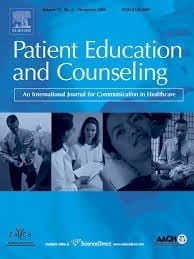This article presents additional results from the study exploring a brief delivery of the RQI-developed patient activation intervention (PAI) in community health centers in New York City. Medical students delivered the 10-minute intervention to patients in the health center waiting rooms. Two evaluation measures were used:
- Patient activation measure (PAM): assesses patients’ knowledge, skills, and confidence to manage their health care.
- Patient’s preference for control (PPC) scale: determines the degree to which patients wanted to be involved in their care
The PAI improved PAM scores regardless of their original PPC. One-third of the study participants moved from lower to higher levels of activation as determined by the PAM, with patients who began with lower levels of activation showing the greatest improvement. The PAI was determined to be efficient in its activation of low-income minority populations, priming them for more effective encounters with their physicians and establishing a precedent for patient activation initiatives in other community health center settings.
Resource
- Visit Website [ english ]
